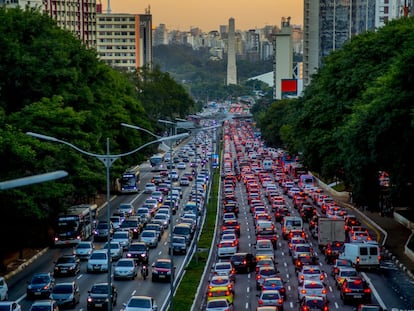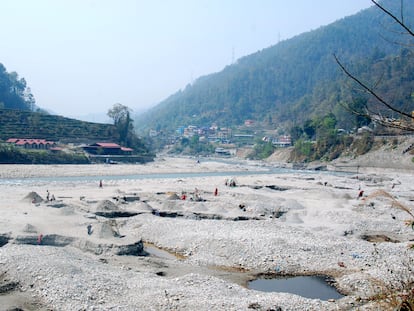Tijuana’s urban sprawl leads to chaos every time it rains
Over 160,000 people in the Mexican border city lost power recently after a one-hour downpour that caused landslides and floods
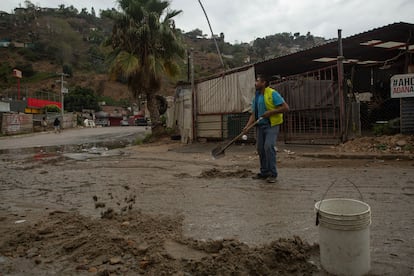
The weather forecast called for rain in Tijuana, starting around four in the afternoon. But shortly after 10 a.m., the sky darkened, lightning flashed, and heavy rain poured down for a little over an hour. WhatsApp and other social media platforms were swamped with messages and images of strong winds toppling café umbrellas, fires and sparks from downed power lines, and collapsing walls. The city experienced a major blackout and local government agencies had to suspend work due to the power outage.
Authorities later reported that over 160,000 people were left without electricity along the Baja California coast, including Tijuana, Rosarito, Ensenada, and San Quintín. They blamed the power outage on heavy rains and “unusually strong” winds of 28 miles (45 kilometers) per hour. Even the mildest Category 1 hurricanes have winds of 74 mph (119 kmh), which usually only cause “slight damage,” according to the Mexican government.
As the chaos began to unfold, Mayor Montserrat Caballero went live on Facebook to explain the situation. She urged everyone to stay home unless absolutely necessary, and announced the cancellation of afternoon classes. According to Mexico’s public safety agency (SINAPROC), Tijuana recorded 1.5-6 millimeters (.06-0.2 inches) of rain that morning. Government reports indicate that problems typically arise in Tijuana when rainfall exceeds 60 millimeters (2.4 inches). Despite only receiving 10% of that amount, the people of Tijuana had big problems all day long.
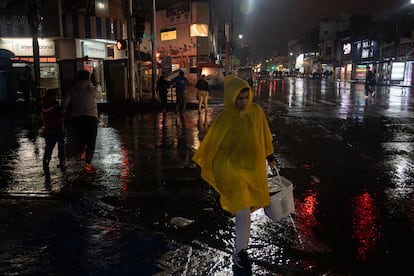
This is nothing new for Tijuana. Last winter, the city experienced major flooding and 10 landslides that caused two deaths. Dozens of homes had to be evacuated and authorities declared a state of emergency due to geological, hydrological and meteorological hazards.
Chaos often ensues in Tijuana when it rains. Experts attribute this to three main factors that lead to a number of other issues. First, the local topography is conducive to flooding and landslides. Second, inadequate storm drainage and excessive garbage in the streets exacerbate the situation. Finally, uncontrolled urban growth and government corruption hinder the implementation of effective solutions. Urgent action is needed, as climate change further compounds the problem. According to Miguel Ángel Ceballos, SINAPROC’s director in Tijuana, the rainy season now starts in November instead of January. Furthermore, a new weather phenomenon called the Mexican monsoon produces increased precipitation in northwest Mexico from June to September.
Defend and recover
On the morning of November 15, some of the most striking images came from Zona Río and the Hippodrome, which are middle- and upper-class Tijuana neighborhoods. Nature doesn’t care about money. What matters is the ability to defend against its destructive forces and recover quickly, says Juan Manuel Rodríguez Esteves, a researcher at the Colegio de la Frontera Norte (COLEF) and an expert in water-related disasters. Rodríguez points to the city’s exclusive Chapultepec neighborhood. Though located in a hillside area and susceptible to flooding, its ample financial and political resources mitigate its vulnerability and expedite recovery.
In the same city, miles away from those luxurious houses, José Guzmán Palomares braves the rain and heads out to work. “People call me ‘Turtle’ because I used to be pretty fat,” said Guzmán with a smile. As he talks, Guzmán diligently shovels mud and debris from the streets so cars can get through.
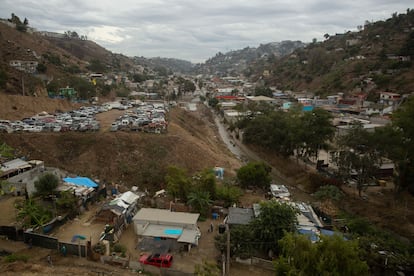
Many of Tijuana’s streets are unpaved, but Turtle is clearing one of the few paved arteries from the suburbs to the city. It’s a single-lane road that connects downtown Tijuana to over 13,000 homes spread across nearly 4.5 square miles of hills, slopes and the canyon where Los Laureles is situated. Many are ramshackle structures built with flimsy materials that lack basic amenities like potable water and drainage systems.
Tijuana’s canyons are a big problem. “When it rains, the water gushes down the canyons and there’s not much time for people to react,” said Rodríguez. That’s what just happened in this corner of the Los Laureles canyon. “It’s not so much the rain, but all the garbage that comes down from the hill up there,” said Concepción, who owns a tire shop near where José is cleaning up mud. “When it floods, the water comes halfway up my leg.” She says garbage is only picked up on Tuesdays when people are at work, so they put their trash out the night before. Dogs get into it and spread it everywhere. “The garbage people just grab the bags that aren’t all ripped up and leave all the other stuff in the streets. When it rains, it all washes down here. There’s an old storm drainage system, but it doesn’t work too well,” said Concepción.
The stormwater system in Tijuana is inadequate and quickly overflows, says Ceballos, who admits that “the city doesn’t have much storm drainage — we mostly have sand traps.” There are 37 sand traps located in the lower parts of the canyons that filter rainwater and separate solids so water can flow more easily. Rodolfo Argote, an architect and a former director of the Tijuana Metropolitan Planning Institute, offered some historical perspective. “The infrastructure that was built initially didn’t really anticipate this much growth. Some parts have been replaced, but others are very obsolete.”
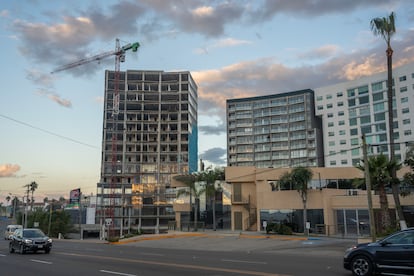
Mapping the risk
The climate here is semi-arid, with infrequent rainfall. However, the city is situated on loose soil and crisscrossed by canyons, hills and streams. When it rains, the water tends to flow toward the Tijuana River. Ceballos says, on average, “the municipality gets about 1-1.5 inches (25-38 mm) of rain in a storm lasting 24-36 hours. The problems start when that much water falls in a much shorter period.”
The problem is evident in the risk maps of Tijuana that SINEPROC updated in 2019. All flood-prone areas, streams, historical flood zones, and unstable slopes with landslide potential have been thoroughly identified. Ceballos plans to use an augmented reality tool to visualize water behavior in the canyons. According to SINEPROC’s maps, the Los Laureles canyon is a major risk area for floods and landslides.
“When it rains in Tijuana, corruption flows through the streets”
Dr. Rodríguez doesn’t mince words when defining the problem. “There’s no such thing as a natural disaster. It’s not natural to build seaside hotels or riverbank homes. We should call them social disasters instead.”
The Tijuana government agency that issues building permits has access to SINEPROC’s risk maps. “On the surface, it seems like they don’t pay much attention to them because you can see plenty of construction going up in areas of risk,” said Rodríguez. In his book about managing natural disaster risk in Tijuana, Rodríguez explains the consequences of this building frenzy: “Rapid urbanization leads to deforestation, altered rainfall patterns, erosion and sedimentation.”
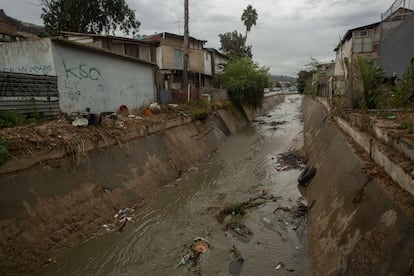
A 1998 study by Víctor Alejandro Espinoza is even more emphatic. “The insatiable greed of the developers was unbounded, disregarding the devastating consequences of destroying natural channels and diverting streams. When it rains in Tijuana, corruption flows through the streets.” Espinoza puts most of the blame for Tijuana’s situation on urban development motivated by fast and easy profits.
A third study conducted by COLEF in 2018 offers the following statistics. “Over 10% of the population (more than 153,000 residents) live in areas that are highly vulnerable to flooding, and another 18% (277,000 residents) live in areas of medium-to-high vulnerability.”
On the morning of November 15, had the risk map been projected like a hologram over Tijuana, it’s likely that one of those numbers would have hovered above José the Turtle’s head as he held out a paper cup for tips. “I don’t have a steady job because I’ve got kidney disease, a hernia and some other health problems,” he said. That’s why when the rivers of mud, garbage and water start flowing through Tijuana, José takes to the streets with a shovel in hand. He cleans up the aftermath wearing a fluorescent yellow vest so vehicles can see him, and says he can make $35 or $40 when it rains. “A few others come around to clean the streets, and I can’t really tell them to go away. Anyway, there’s enough work here for everyone.”
Sign up for our weekly newsletter to get more English-language news coverage from EL PAÍS USA Edition
Tu suscripción se está usando en otro dispositivo
¿Quieres añadir otro usuario a tu suscripción?
Si continúas leyendo en este dispositivo, no se podrá leer en el otro.
FlechaTu suscripción se está usando en otro dispositivo y solo puedes acceder a EL PAÍS desde un dispositivo a la vez.
Si quieres compartir tu cuenta, cambia tu suscripción a la modalidad Premium, así podrás añadir otro usuario. Cada uno accederá con su propia cuenta de email, lo que os permitirá personalizar vuestra experiencia en EL PAÍS.
¿Tienes una suscripción de empresa? Accede aquí para contratar más cuentas.
En el caso de no saber quién está usando tu cuenta, te recomendamos cambiar tu contraseña aquí.
Si decides continuar compartiendo tu cuenta, este mensaje se mostrará en tu dispositivo y en el de la otra persona que está usando tu cuenta de forma indefinida, afectando a tu experiencia de lectura. Puedes consultar aquí los términos y condiciones de la suscripción digital.
More information
Archived In
Últimas noticias
Most viewed
- Reinhard Genzel, Nobel laureate in physics: ‘One-minute videos will never give you the truth’
- Oona Chaplin: ‘I told James Cameron that I was living in a treehouse and starting a permaculture project with a friend’
- Pablo Escobar’s hippos: A serious environmental problem, 40 years on
- Charles Dubouloz, mountaineering star, retires at 36 with a farewell tour inspired by Walter Bonatti
- Why we lost the habit of sleeping in two segments and how that changed our sense of time
